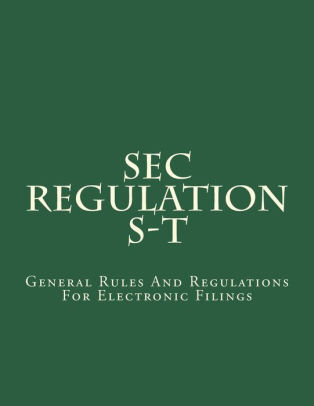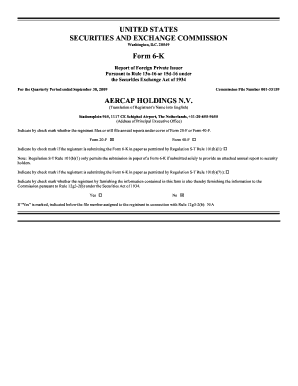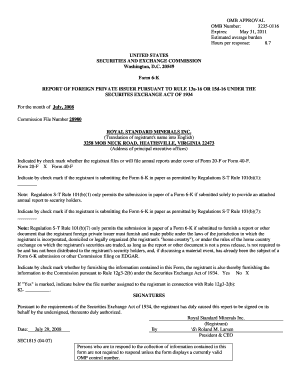Rule 101 Of Regulation S-T
Investor Relations
Rule 101 of Regulation S-T: General Rules and Regulations for Electronic Filings

Regulation S-T is a set of general rules and regulations formulated by the U.S. Securities and Exchange Commission (SEC) for the electronic filing of financial reports and other important information by public companies. It provides the framework that governs the submission and disclosure of electronic documents, ensuring efficiency, accuracy, and accessibility for investors and the public.
Why Is Regulation S-T Important?
Regulation S-T plays a crucial role in the modernization of financial reporting and enhances the accessibility and transparency of corporate information. It revolutionizes the way public companies submit and disclose their financial reports, making the process more efficient and cost-effective.

With the advent of technology, the SEC recognizes the need to embrace electronic filing systems to keep pace with the advancements in communication and information exchange. Regulation S-T serves as the foundation for such systems, enabling companies to file their reports and documents electronically in a standardized format.
The Key Provisions of Rule 101
Rule 101 of Regulation S-T establishes specific requirements and guidelines for electronic filings. It covers important aspects such as document format, submission methods, authentication, and record retention. Let's explore the key provisions of this rule:
1. Document Format
The rule specifies the accepted formats for filing documents electronically. It includes HTML, ASCII, and XML, among others. These formats ensure compatibility and readability across various systems and platforms.
2. Submission Methods
Regulation S-T provides multiple methods for submitting electronic filings. Companies can choose to file via the SEC's Electronic Data Gathering, Analysis, and Retrieval (EDGAR) system, directly through the SEC's website, or through other approved third-party filing agents. This flexibility enables companies to use the most convenient and efficient method for their filings.
3. Authentication and Signatures
Authentication and signatures are essential for ensuring the integrity and validity of electronic filings. Rule 101 requires companies to adopt proper authentication methods to verify the authenticity of their submissions. Digital signatures and other secure methods are commonly used to satisfy these requirements.
4. Record Retention
To maintain a comprehensive and accessible record of filed documents, Regulation S-T mandates companies to retain electronic records of their submissions. These records must be securely stored and readily available for retrieval and inspection by regulatory authorities and the public.
FAQs
Q: Who is required to comply with Regulation S-T?
A: Regulation S-T applies to all companies registered with the SEC that are required to file reports or other documents electronically. This includes public companies, mutual funds, and certain regulated entities.
Q: Are there any exceptions to electronic filing under Regulation S-T?
A: While the SEC encourages electronic filing, it does recognize certain circumstances where exceptions can be made. These exceptions include situations where the electronic filing would cause undue hardship or where the document contains sensitive or confidential information.
Q: How does Regulation S-T benefit investors?
A: Regulation S-T enhances transparency and accessibility of corporate information for investors. By mandating electronic filings, it ensures that investors have timely access to accurate and comprehensive financial reports and other important documents. This enables investors to make informed decisions based on up-to-date and reliable information.
Q: How can I access documents filed under Regulation S-T?
A: The SEC's EDGAR system allows investors and the public to access and retrieve documents filed under Regulation S-T. These documents are available for free on the SEC's website, ensuring easy and open access to important information related to public companies.
Conclusion
Rule 101 of Regulation S-T establishes the foundation for the electronic filing of documents by public companies. It streamlines the filing process, improves accessibility, and enhances transparency for the benefit of investors and the public. By requiring standardized formats, authentication mechanisms, and proper record retention, Regulation S-T ensures the reliability and integrity of electronic filings. This modernization of financial reporting facilitates efficient information exchange and contributes to a more informed and dynamic investment landscape.
Investor Relations
 Image Source : www.sec.gov
Image Source : www.sec.gov Cceplogoc691a.jpg
 Image Source : www.sec.gov
Image Source : www.sec.gov Regulation D Rule 504 Securities Offering Requirements And Disclosures
 Image Source : www.securitieslawyer101.com
Image Source : www.securitieslawyer101.com securities regulation disclosures
SEC Regulation S-T: General Rules And Regulations For Electronic
 Image Source : www.barnesandnoble.com
Image Source : www.barnesandnoble.com regulation sec wishlist add
Fillable Online AHP AWARD APPLICATION FORM Fax Email Print - PdfFiller
 Image Source : www.pdffiller.com
Image Source : www.pdffiller.com Burglary Prevention: Rule 101
 Image Source : www.shefflock.co.uk
Image Source : www.shefflock.co.uk burglary prevention unpleasant traumatic unfortunate
Tp 1029 8 Iq Fillable - Fill Online, Printable, Fillable, Blank | PdfFiller
 Image Source : www.pdffiller.com
Image Source : www.pdffiller.com LOGO
 Image Source : www.sec.gov
Image Source : www.sec.gov Investor relations. Regulation sec wishlist add. Fillable online ahp award application form fax email print. Sec regulation s-t: general rules and regulations for electronic. Securities regulation disclosures